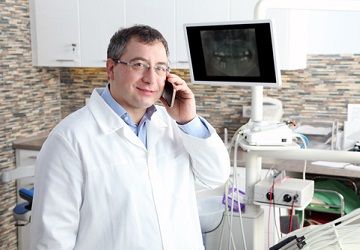As Telemedicine in Dentistry Expands, So Do the Challenges
A new study published by the International Electronic Journal of Rural and Remote Health Research, Education, Practice and Policy examined the integration of teledentistry in Australia, where much of the population live in locations distant from dental providers.

The use of telemedicine is continuing to grow in healthcare as doctors seek new ways to connect with their patients. Now the practice is starting to take root in dentistry. As Dentist’s Money Digest previously reported, teledentistry can mean many things, from dentists emailing X-rays to each other to the creation of virtual dental homes, providing care to patients with limited access to dentists.
Even though this trend is taking off, there are still challenges to be found in the implementation of such teledentistry systems, especially when it comes to more rural populations. A new study published by the International Electronic Journal of Rural and Remote Health Research, Education, Practice and Policy examined the integration of teledentistry in Australia, where much of the population live in locations distant from dental providers.
Such studies can help dentists in the United States better understand the challenges of providing teledentistry services in their own communities. In the study, researchers were able to identify several constraints to growth regarding teledentistry practices, primarily related to individuals, community infrastructure, and the healthcare system as a whole.
Regarding individual patients, it was noted that many patients, especially in more rural areas, have poor levels of information technology (IT) literacy, and they might be resistant to using new technologies to contact their providers. There were also concerns about data security and access to dental records, as well as concerns about a decline in the quality of health information received and accuracy of diagnosis for their individual dental problems.
Many remote areas lack reliable internet access, and there are often incompatibilities between the hardware and software required to provide teledentistry services. The study also identified a lack of technical expertise and training available for the new technology. The absence of ongoing technical support was a common issue to providing services through teledentistry.
Finally, at an organizational level, it was noted that the current healthcare system was incompatible with a teledentistry model, and that there was a lack of reimbursement structure for dentists using these types of service structures. It was also found that there were no set guidelines regarding copyright, licensure, and taxation for such systems. Perhaps not surprisingly, bureaucratic difficulties contributed to the difficulty implementing such systems.
The expansion of teledentistry will require strong support from policy makers, the public, and dentists themselves if the practice is to expand throughout rural America. Changes to our technology infrastructure will be required, and regulations and laws will have to change to reflect the new way of doing business. Perhaps most important, dentists will have to show that this type of service can still result in accurate diagnoses and cost-saving treatment options for patients in order for the teledentistry to become more widely accepted and used.
ACTIVA BioACTIVE Bulk Flow Marks Pulpdent’s First Major Product Release in 4 Years
December 12th 2024Next-generation bulk-fill dental restorative raises the standard of care for bulk-fill procedures by providing natural remineralization support, while also overcoming current bulk-fill limitations.